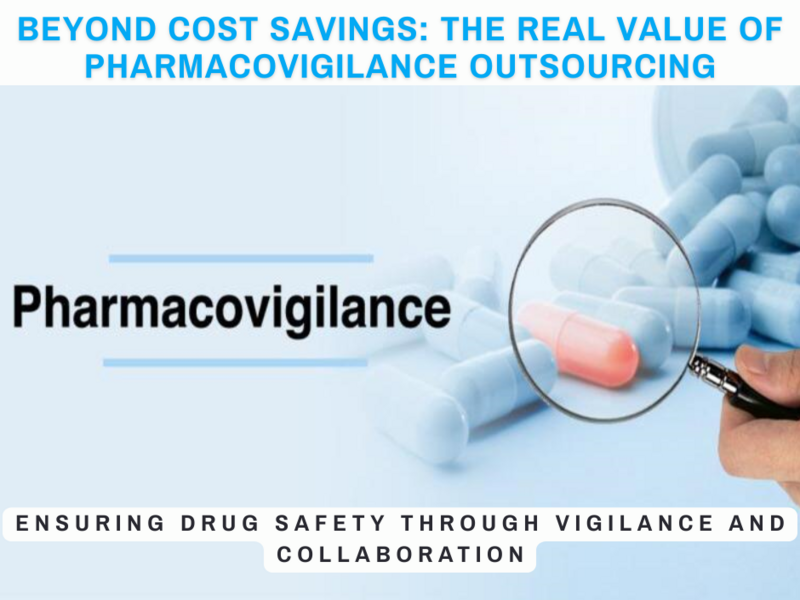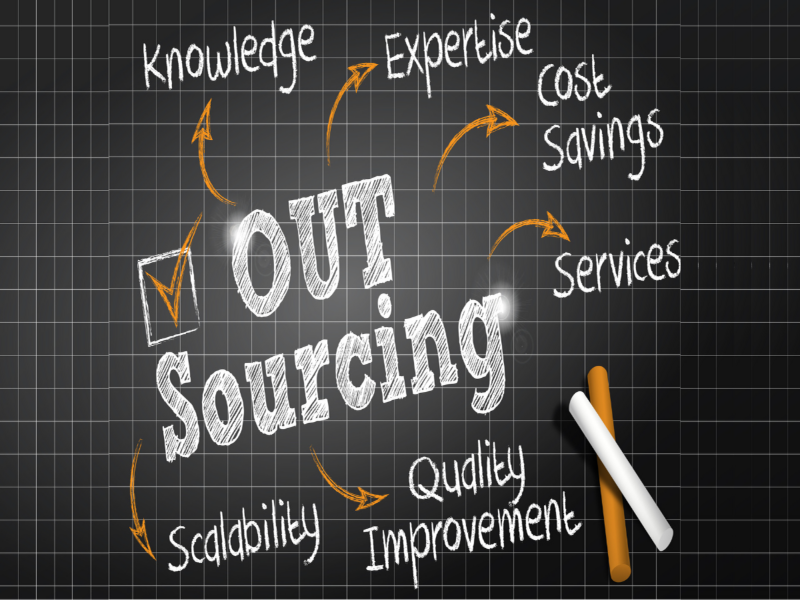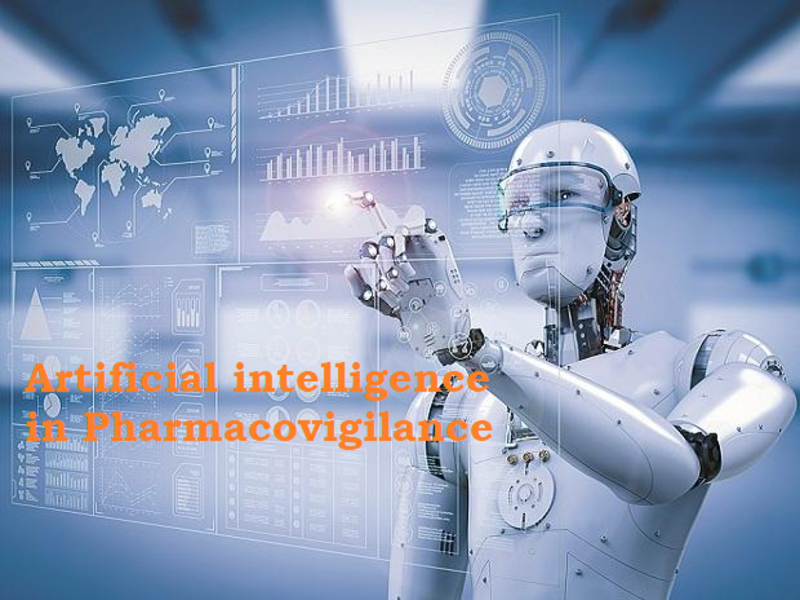Imagine a pharmaceutical company standing at the crossroads of innovation and compliance. On one side, there’s the promise of breakthrough therapies and better outcomes for patients. On the other hand, a vast and ever-changing regulatory landscape demands constant vigilance, well-reporting systems and unwavering compliance.
Amid this complexity, a powerful strategy is gaining ground: pharmacovigilance outsourcing, a model where companies partner with specialized external service providers to manage drug safety operations.
But what exactly makes this approach so compelling?
Before we explore that, let’s take a step back. The journey toward effective pharmacovigilance isn’t linear, and certainly not uniform. Over the years, as the regulatory landscape has evolved and product portfolios have become more complex, companies have had to ask themselves a tough question: Do we build PV capacity internally, or do we look outward for support?
That’s where PV outsourcing comes in. But contrary to popular belief, outsourcing pharmacovigilance isn’t a simple “plug and play” arrangement. It’s not about handing off responsibility; it’s about building the right kind of partnership, one that aligns with your business model, maturity, and long-term vision.
There are three main ways companies can outsource pharmacovigilance, each with its benefits and things to consider. Let’s take a look.
Three Models of Pharmacovigilance Outsourcing
Pharmacovigilance outsourcing is not a one-size-fits-all solution. It offers flexible models tailored to fit your unique business needs, internal capabilities and long-term strategy.
Full Outsourcing
This is the end-to-end model where all PV activities like case processing, medical review, aggregate reports, signal detection, and regulatory submissions are fully managed by the service provider. It’s ideal for companies without internal PV infrastructure or those seeking to streamline entirely.
Functional Service Provider (FSP) Model
In this model, the company outsources specific tasks, like case processing or literature screening, while keeping critical or strategic activities. This approach offers flexibility and scalability while retaining control over essential processes.
Hybrid Model
A combination of the first two, this model involves multiple outsourcing partners across different PV functions. It provides a customized blend of internal oversight and external support, a practical choice for growing companies with diverse portfolios.
Here’s Why More Pharma Companies Are Outsourcing Their Pharmacovigilance Activities
For many pharmaceutical and biotech firms, the question isn’t if they should outsource pharmacovigilance (PV), it is how soon. And the reasons are clear.
1. Access to Specialized Expertise
By outsourcing, you gain access to a team of experienced PV specialists who understand global regulations, safety reporting, and case management. This level of expertise takes years to develop internally.
2. Improved Regulatory Compliance and Risk Mitigation
External PV partners stay on top of ever-changing global requirements, helping you stay compliant and avoid costly regulatory delays or findings.
3. Scalability and Flexibility
Workload spikes during clinical trials or product launches are easily managed by outsourcing partners who can scale resources as needed, without long-term commitments.
4. Focus on Core Functions
When you outsource pharmacovigilance, your internal teams are free to focus on what matters most, like driving innovation and expanding into new markets
5. Cost Efficiency
Outsourcing cuts the heavy costs of setting up and running an internal PV team, giving you access to high-quality services without the burden of full-time overhead
How to Choose the Right Pharmacovigilance Partner: Key Qualities to Consider
Just as in any strategic partnership, the success of pharmacovigilance outsourcing hinges on choosing the right provider. Here’s what to keep in mind:
Experience and Track Record
Look for providers with proven experience in managing similar projects. Real-world case studies and client testimonials can give you powerful insights into how a PV partner performs.
Quality and Regulatory Compliance
Certifications like ISO 9001 and ISO 27001 are strong signs that a partner takes quality and data security seriously. A solid quality assurance framework isn’t optional; it’s essential
Data Protection
Patient safety starts with data security. Ensure your partner complies with international data privacy laws and has strong safeguards in place.
Geographic Compatibility
Time zone alignment, cultural compatibility, and language capabilities can make or break collaboration. Choose a partner who can work seamlessly with your team.
Scalability and Flexibility
Your needs will evolve. The ideal partner can scale with your growth and adapt to changing regulatory and operational demands.
Emerging Trends That Are Redefining Pharmacovigilance Outsourcing
The pharmacovigilance landscape is changing fast, and outsourcing partners are leading the way in driving some of the most exciting shifts
AI and Automation
Advanced technologies like machine learning and natural language processing are being used to analyze safety data, including literature screening, faster and more accurately than ever before.
Collaborative Ecosystems
New consortiums and public-private partnerships are bringing together regulators, pharma companies, and tech innovators to share insights and improve safety outcomes.
Patient-Centric Approaches
Modern pharmacovigilance is no longer just about detecting signals; it’s about hearing the patient’s voice. Outsourcing partners are increasingly integrating patient-reported outcomes and engagement strategies into their safety models.
The Roadblocks: Challenges Associated with Outsourcing Pharmacovigilance
Despite its benefits, outsourcing doesn’t come without hurdles. Key challenges include:
Communication Barriers
When teams are spread across different regions and time zones, clear processes and the right collaboration tools are essential to keep communication smooth and on track.
Global Regulatory Variations
Regulatory expectations differ by country. A global PV partner must have deep regulatory intelligence to ensure compliance across all markets.
Data Integration
Managing safety data from multiple sources and platforms is complex. A strong data governance strategy is essential.
Quality Oversight
Ensuring that outsourced functions maintain the same quality standards as internal ones requires diligent governance, training, and monitoring.
Change Management
Transitioning PV activities to an external partner should be handled strategically to minimize operational disruptions and preserve institutional knowledge
Best Practices for Achieving Success in Pharmacovigilance Outsourcing
Pharmacovigilance outsourcing isn’t just about meeting regulatory obligations, it’s about building a relationship that strengthens your safety ecosystem. Building your internal capabilities allows you to stay agile in an increasingly complex global landscape.
Successful pharmacovigilance outsourcing requires structure, foresight, and a shared commitment to quality. Here are five best practices that form the backbone of any high-performing pharmacovigilance partnership
Define the Scope with Precision
A clear, shared understanding of who does what, and by when, sets the tone for the entire partnership. Don’t leave roles, responsibilities, or timelines open to interpretation. Align early on performance expectations and ensure both sides are calibrated on compliance requirements from day one.
Prioritize Open and Ongoing Communication
High-performing pharmacovigilance partnerships thrive on regular check-ins, open feedback loops, and clearly defined escalation paths. Communication shouldn’t be reactive; it should be embedded in the culture of the collaboration.
Implement Governance Frameworks
Set up routine performance reviews, key performance indicators (KPIs), and internal audits to monitor progress and maintain accountability. This isn’t about micromanagement; it’s about creating a rhythm that keeps both parties aligned on quality, compliance, and continuous value delivery.
Commit to Continuous Improvement
The regulatory landscape is anything but static. That’s why leading organizations encourage their partners to bring more than just operational support, they want innovation. Whether it’s adopting new automation tools, refining processes, or upskilling teams, the best partnerships evolve together.
Plan for Risk—Not Just Results
Every outsourcing model carries some level of risk. The key is to anticipate it, not react to it. Develop a clear risk management plan that identifies potential weak spots, outlines mitigation strategies, and includes a backup plan. A proactive approach to risk builds resilience and trust.
Conclusion: Why Pharmacovigilance Outsourcing Is a Smart Move for the Future
Pharmacovigilance outsourcing is more than a tactical cost-saving measure, it’s a strategic enabler of quality, agility, and innovation. With regulations becoming more complex and safety expectations higher than ever, having the right experts by your side can be a game-changer.
Whether you’re gearing up for a product launch or looking to strengthen post-market safety, outsourcing gives you a flexible, expert-led way to move forward.
Every report matters. Every patient counts.
Let Jeyflex help you build stronger safety systems through expert PV outsourcing.
Get in touch to explore customised PV solutions.
Article by: Marraret Ouma




